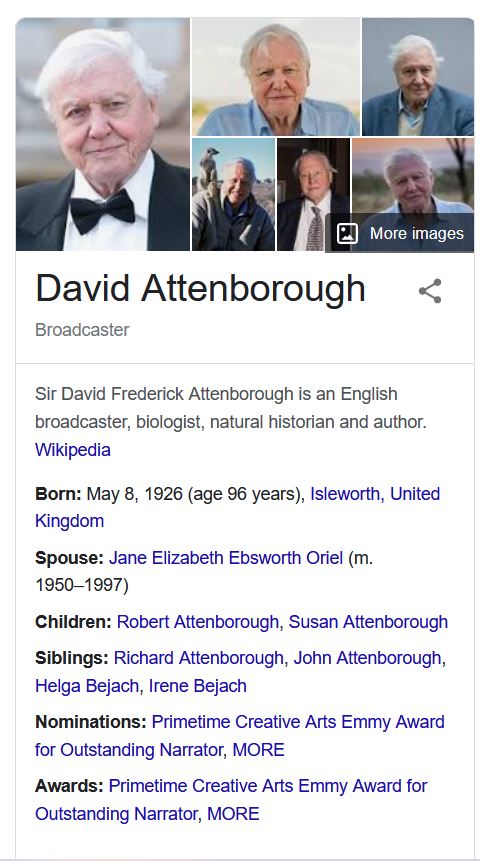
Want to know how to rank #1? Simple, give Google what it wants.
It’s easier than you might think too because all the information you need is readily available.
Ten years ago Google let something slip; a document which had, previously, only been seen by Google’s employees and contractors – the company’s human review guidelines.
Google employs human reviewers to manually check some of the results and ensure the search engine is consistently returning quality results and flagging any which are not up to scratch.
To do their job properly, the reviewers needed a set of guidelines whereby Google laid out, in elaborate detail, what constituted a high quality website versus a low quality one.
And in 2012 that document leaked.
Now, as any journalist or politician will tell you, leaks rarely occur by accident and instead happen by design. And while its algorithms and patents might be closely guarded secrets, Google has always been forthright when it comes to its views on quality content.
The timing of the leak is also telling. 2012 was also the year of the Penguin algorithm update, which specifically targeted spammy practices like keyword stuffing. And just one year previous, Google rolled out its first Panda update, the controversial algorithm update designed to penalise low quality content.
From then on the company began to share the documents publicly.
This means for the past decade Google has literally been handing us the answers to all those tough SEO questions. So there’s no reason for you not to pass the test.
The latest version of the Google Search Quality Evaluator Guidelines was released this summer and is available here: https://static.googleusercontent.com/media/guidelines.raterhub.com/en//searchqualityevaluatorguidelines.pdf
And guess what? While there may be some changes here and there, the core message hasn’t changed much in ten years.
So if you’re determined to do what it takes to outperform your competitors on Google, this is your playbook, your rulebook and your holy bible all rolled into one.
Admittedly there’s quite a lot to digest, so this article aims to break it down a little bit with what I believe to be the main points of focus…
1. Focus on Quality
Imagine what would happen if Google suddenly started to slide.
Imagine they just decided one day, hey we’ve been top of the search game for years now let’s just kick back and relax.
So instead of continuously investing in finding new ways to deliver the best results for any given search term, they decided to open up the floodgates to let any ole crap rank.
Well, for a start people would lose trust in their search engine so companies would stop advertising there.
Considering that 80% of Google’s revenue comes from ads, this would cripple the company. Desperate to cut costs, they would start slashing services. While the quality of other services would begin to plummet dramatically.
These are services we’ve relied upon for decades; Maps, Google Translate, Gmail… individuals and businesses would look all suddenly have to find alternatives. Everyone would suddenly start using Bing…

Google’s core business model relies on the quality of the websites delivered by its search results.
So to get what you want from Google – i.e. rankings – you need to be serving it quality content.
Armed with these guidelines you now have a full playbook to help you do so.
2. Have A Clear Purpose
The Google Search Quality Guidelines state that webpages must have a clearly-defined purpose.
This makes sense. After all, how can something with no clear purpose ever expect to rank?
So be 100% certain that every piece of content on your website has a clear purpose and makes its main point clearly.
Conducting a content audit will help you hone in on these pages and also provide insights on how to fix them.

Look for pages that aren’t performing as well as you had expected, pages with high traffic but equally high bounce rates, as well as pages which are bringing in search traffic for irrelevant keywords. These are all signs of pages with no clearly-defined purpose.
A content audit will also help you find so-called “thin content”. These are pages with little to no content which can either be removed, redirected or merged with larger content pieces.
Thin content is something Google mentions specifically under its “Low quality pages” section:
Low quality pages can occur on any type of website, including academic websites, nonprofit websites, government websites, or any other generally helpful type of website. Low quality pages may be about any topic
What Google is essentially saying here is that, even if Google considers your site to be a high authority site overall, low quality pages – that is pages without a clearly-defined purpose – can work to drag the whole site down.
This is why it’s vital to revisit your old content regularly, improving it and updating it when necessary and eliminating content that is no longer required and/or fit for pupose.
3. Be Helpful
Every piece of content you publish should strive to be as helpful as possible.
Google’s guidance on this topic states plainly that:
Websites and pages should be created to help people. If that is not the case, a rating of Lowest may be warranted.

On the other end of the scale, are high quality pages – these are pages that don’t just fit the purpose, they go above and beyond to help users.
So before you hit publish ask yourself whether you have done everything you can to ensure maximum benefit to users.
Similarly, if you’re trying to figure out why a particular competitor article or page is outranking you, stop looking at things like keyword density and word counts and instead ask what additional benefits they’re providing to users that you aren’t.
4. Be Trustworthy
Ever walk into a situation that made you feel unsafe?
A dark alley, a dodgy-looking bar, or maybe it’s just a pushy salesperson that’s trying to close the deal while that little voice inside you is sounding the alarm.
Your instincts kick in – time to leave.
We often get that same online. We don’t always know why, but something inside us tells us not to trust certain websites, so we leave.
This happens even if the sites are legit – for whatever reason, they just look wrong.
Maybe it’s the design or overall presentation, maybe the site is full of typos, maybe it’s plastered with ads or perhaps the menus and interfaces are buggy.
If you were to arrive on a site which had all of the above problems you would make a judgement call fairly quickly.
Google is also making those kinds of calls every day and based on the exact same criteria.
That’s why it’s vital your site displays as many positive trust signals as possible. It should look professional, not cheap, not tacky, not sleazy.
Your content needs to be checked carefully and your site’s design, structure, menus, functionality and overall user experience should be properly tested to ensure it’s functional and accessible to all.
5. Be Benign
Are you familiar with the Hippocratic Oath?
“Do no harm.”
It doesn’t just apply to doctors, webmasters should adopt it too.
Google has a zero-tolerance policy for misinformation, hate speech, fake news, pseudo-science or quack cures which might cause harm or even cost lives.
Its position as the market leader in search puts it at the front lines in the battle against misinformation.
So keep in mind that every time Google crawls your site, it’s not just checking your content and links – it’s also judging your trustworthiness.
That’s why you should always take extra care to ensure all the information you provide on your website is accurate and up to date and remove any ambiguities which might lead to misunderstanding.
Any claims you make – be sure you can back them up. This includes everything from reviews and testimonials to ensuring your data and statistics come from credible sources.
Accuracy is particularly important if your website falls under the category of YMYL content – which stands for Your Money Your Life.
Google defines YMYL topics as having:
“…a high risk of harm because content about these topics could significantly impact the health, financial stability, or safety of people, or the welfare or well-being of society.”
These topics include:
- Medicine and healthcare
- Nutrition and fitness
- Money and finance (including financial services, investments, tax and insurance.)
- Science, research and academia
- Law, social welfare and government
Essentially, YMYL topics encompass any topic that requires the advice of qualified experts.
So if your website falls under this category you need to be aware that you will be scrutinised carefully to ensure your content ticks the right trust boxes and doesn’t raise any red flags.
So here’s another Google acronym to learn – EEAT. It stands for Experience, Expertise, Authority, Trust.
Before you publish anything make sure you tick all those four boxes. And the best way to do this is to provide content from known experts in your field. If you don’t have those experts within your organisation, then you go out and find them.
So let’s imagine a guy called Dave, his business is selling sports equipment online. One day, by chance, Dave meets an old school friend called Mike at a local supermarket.
Mike tells Dave he doesn’t go to the gym anymore because of a back injury. “I’d love to get back in shape”, Mike says, “but I don’t know what workouts I can do.”
Cue lightbulb… “Aha!”, Dave thinks to himself, “this is something I could write about on my blog.”
And he drives home, mind racing and bursting with excitement about this great new idea.
Except it’s a terrible idea.
Dave knows his products intimately and has a flair for e-commerce but he knows nothing about back injuries or sports rehabilitation. So since he’s not an expert on this topic he risks giving bad advice that could potentially be harmful.
But now let’s imagine Dave knows a famous weightlifting coach called Tom, who trained national champions and even wrote a book about his experiences. And Tom has a colleague called Bill, an eminent physiotherapist.
Dave decides to interview both men asking specific questions based on his earlier conversation with Mike, which then forms the basis of his blog post.
The post goes viral, people love it. It first gets shared on bodybuilding forums, then on Reddit before spreading all over social media. All three men benefit from the publicity and the public is clamouring for more – that one post becomes the first in the series.
Dave compiles the whole series together on a single page of his website. That page rises up the search results and eventually starts getting links from major sports sites and news publications.
What started as a chat in a supermarket has developed into a content marketing monster – Dave even has to upgrade his hosting package just to deal with all the traffic… and all the sales.
Why?
Because he gave Google what it wanted – a well-researched and highly-beneficial piece of content with information backed up by verifiable experts.
6. Be Transparent
If you create content with the help of authoritative sources Google will notice. It’s able to recognise trusted sources, including individuals who are noted experts in their field. And by tying them together with your brand’s content, their trust and authority gets passed along.

That’s because, for more than ten years, Google has been pivoting from a keyword-based web search engine to an entity-based semantic search engine.
The introduction of the Knowledge Graph in 2012 was a sign of things to come. Search for any prominent person, company, product or brand and you will get a nice handy resource box, usually on the right-hand side of your search results.
Google compiles this smorgasbord of data from multiple sources, drawing in everything from Wikipedia entries and news sites to social media profiles, to create a data-rich profile on the search entity in question.
So the more information you provide about yourself, your company or your brand, the more Google can learn and join the dots together.
You also need to ensure your website is equally transparent with full contact details. If your company has a physical address, add the address, add your phone number – demonstrate that you are fully legit and open for business.
Let people who you are and what your company stands for. Add a detailed About Us page with information about your core staff members, company’s founders and so on.
If your company sponsors a sports team or event, make noise about it. If your company has a brand ambassador or celebrity who endorses your product, put them front and centre – let people, and Google, know that they are associated with your brand.
You should also make sure to be equally open about your company’s ESG initiatives and/or any charity work. If you work with a well-known charity be sure to mention it on your website. Link to their website and/or social media profiles – make that connection known.
If your company enjoys consistently high reviews – for example on sites like Trustpilot or Trip Advisor, link to your profiles, let the people know.
And finally, make sure to take care of all those legal trust signals by having proper terms and conditions for your site, plus a privacy policy, cookie policy and data protection policies – this is especially important for those serving markets where strict data protection laws apply, such as the EU.
7. Be Vigilant
Always be checking, always be editing.
Always keep your content up to date and current, updating information and fixing broken links.
Always review and moderate comments and watch out for negative reviews. If customers have a genuine issue or grievance be sure to address those issues directly – don’t just ignore them and hope they’ll go away.
Be ever mindful of your website’s online reputation and its security.
Run regular backups, technical checks and content audits and keep a close eye on Google Search Console. Any issues that get flagged make sure to deal with them promptly.
The web can still feel like the Wild West if you let it, so be the no-nonsense sheriff of your own web property. Let everyone see that you are actively patrolling the perimeter, always looking out for their security and safety.
It’s Hard Work But It’s Possible
But don’t think of it as getting your site to rank top on Google.
Think of it as getting your site to rank #1 with your customers, potential customers and with the public in general.
Remember Google’s search algorithm doesn’t care who the biggest in your industry is, it only cares who’s the best.
So even if you’re a tiny start-up company going up against a multinational Goliath, you can still win the top spot on organic search by making sure your content delivers the best user experience.
And all the while “Goliath” is busy spending a small fortune with Google to maintain its dominance of paid search.
But which method gets the most clicks?
Organic does.
So although they’ve got you beat on budget, you can always beat them on quality – and get the lion’s share of traffic when you do.

